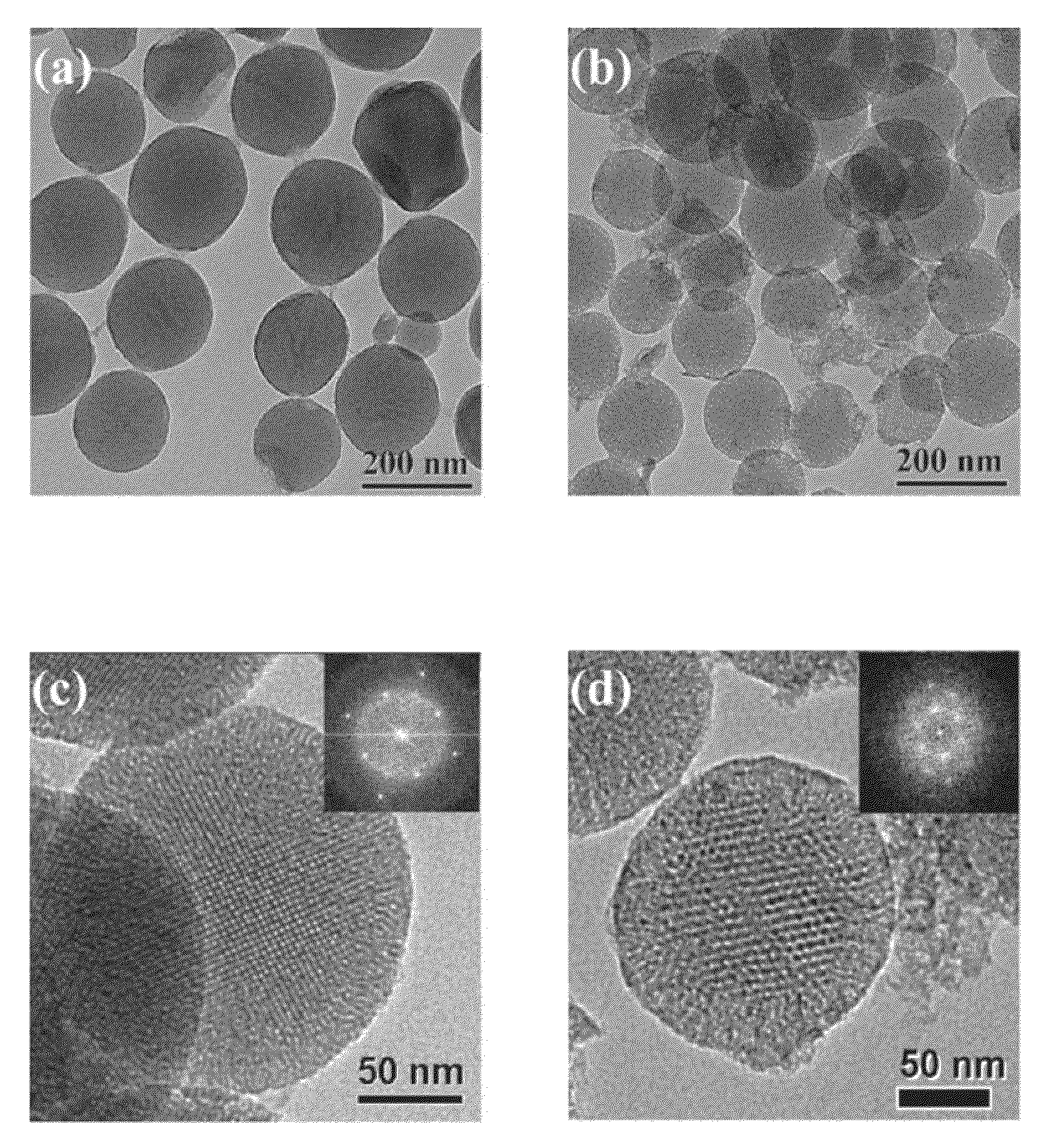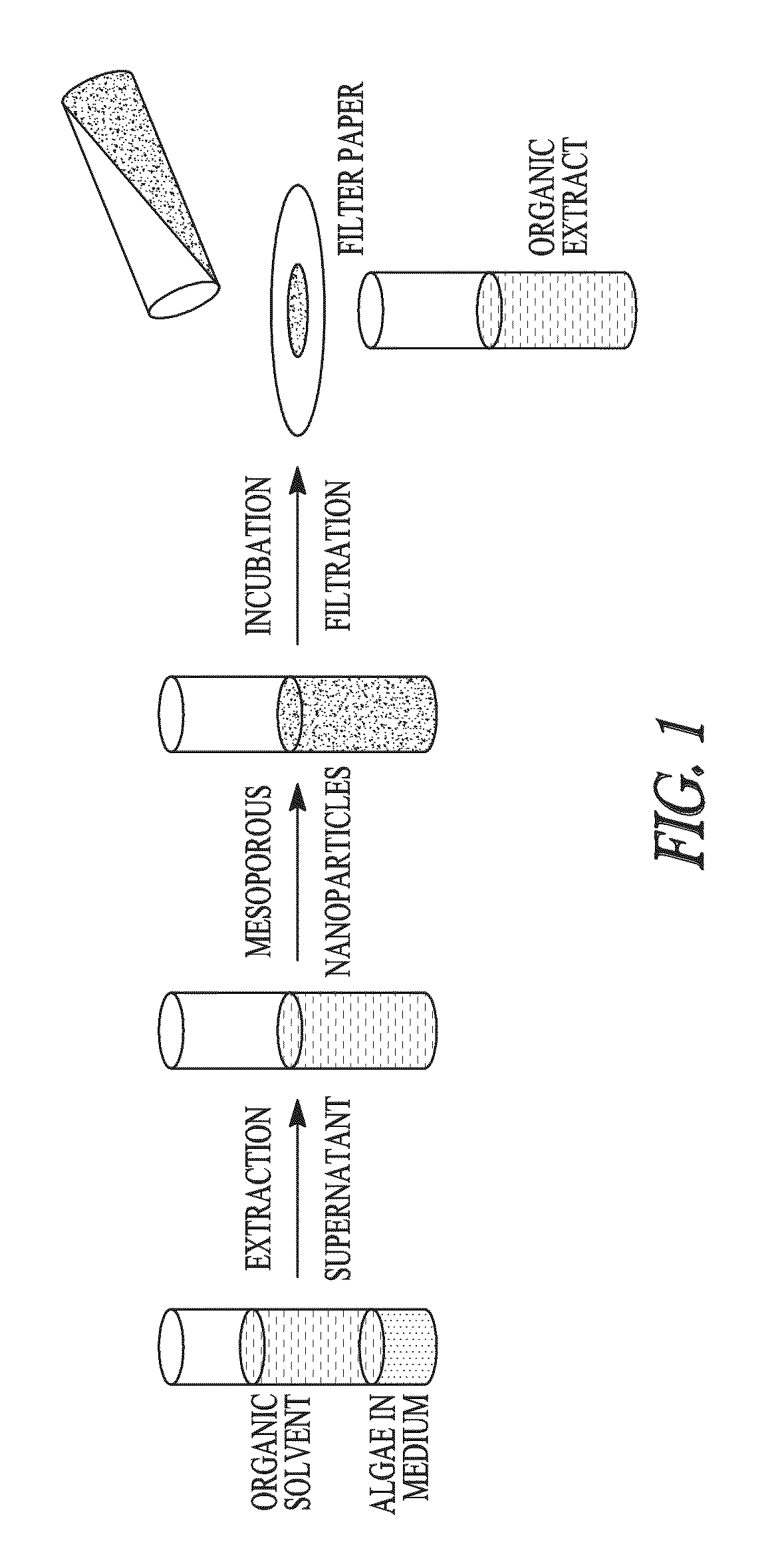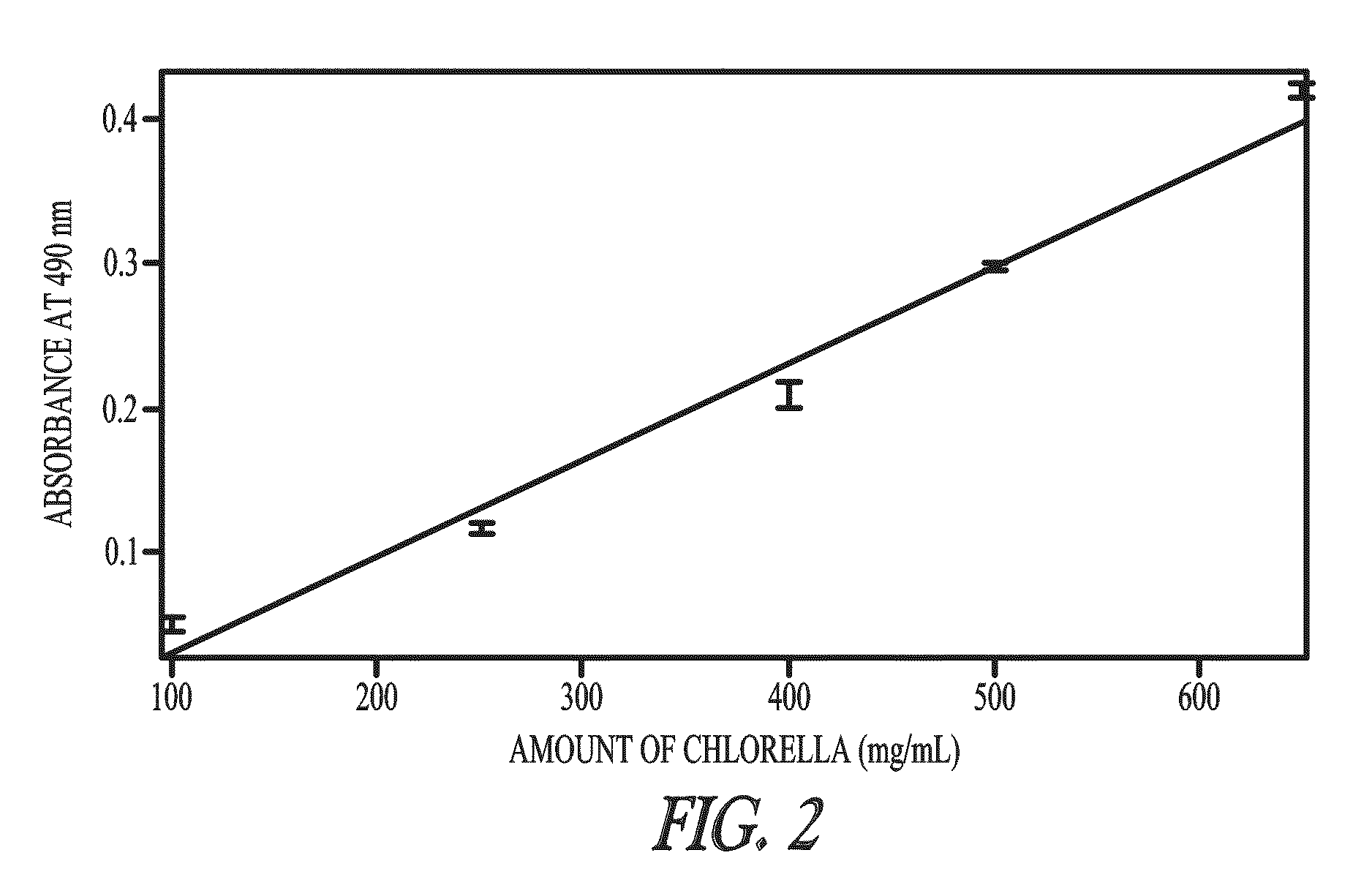Sequestration of compounds from microorganisms
- Summary
- Abstract
- Description
- Claims
- Application Information
AI Technical Summary
Benefits of technology
Problems solved by technology
Method used
Image
Examples
example 1
Synthesis of Mesoporous Materials
A. Synthesis of Mesoporous Silica Nanoparticles (MSN)
[0083]Cetyltrimethylammonium bromide (1.02 g, 2.66 mmol, CTAB) was dissolved in 480 mL nanopure water. Sodium hydroxide (3.5 mL, 2 M) was added to the CTAB solution. The mixture was stirred vigorously at 80° C. for 2 hours. Tetraethyl orthosilicate (5.0 mL, 21.95 mmol, TEOS) was introduced dropwise at a rate of 1 mL / minute. After the addition of TEOS, the reaction mixture was stirred vigorously at 80° C. for 2 hours. The as-synthesized MSN product was filtered and washed with copious amounts of methanol, and dried under vacuum overnight. Once dry the surfactant-template was removed by acid extraction of 2 M HCl (1 mL) in 100 mL methanol. The extraction occurred for 4 hours at 60° C.
B. Synthesis of Propylmethylimidazolium Ionic Liquid MSN (PMIm-IL-MSN)
[0084]For the grafting of ionic liquid (IL) moieties on the outside surface of MSN, 1 mmol IL-trimethoxysilane was stirred with 500 mg of as-synthesiz...
example 2
Selective Sequestration of Compounds Using Mesoporous Particles
Part 1. Algae Cultures
A. Algae Culture Maintenance
[0094]Botryococcus braunii, Chlorella sp. and Neochloris conjuncta were grown on a modified Chu 13 medium; see Table 1. Pre-cultures were carried out in 250-mL Erlenmeyer flasks with shaking at 100 rpm; at 25° C.; light flux density 40 μEm−1s−1; light-dark cycle 14 hours / 10 hours; inoculation at 10% (v / v). Stock cultures were maintained routinely by regular subculturing at 2-week intervals. Sterile-air containing 1% CO2 was aerated into the culture flasks at rate of 100 mL / minute to maintain the pH of the medium ˜8-9.5.
TABLE 1Composition of Modified Chu 13 Medium*CompositionConcentration (g / L)Potassium Nitrate0.4Potassium phosphate0.08monobasicCalcium chloride•2H2O0.107Magnesium sulfate•7H2O0.2Citric acid0.1Ferric citrate0.01Cobalt chloride0.02Boric Acid0.00572Manganese chloride•4H2O0.00362Zinc sulfate•7H2O0.0044Sodium molybdonate0.000084*See Dayananda et al., “Autotrophi...
PUM
| Property | Measurement | Unit |
|---|---|---|
| Diameter | aaaaa | aaaaa |
| Diameter | aaaaa | aaaaa |
| Diameter | aaaaa | aaaaa |
Abstract
Description
Claims
Application Information
 Login to View More
Login to View More - R&D
- Intellectual Property
- Life Sciences
- Materials
- Tech Scout
- Unparalleled Data Quality
- Higher Quality Content
- 60% Fewer Hallucinations
Browse by: Latest US Patents, China's latest patents, Technical Efficacy Thesaurus, Application Domain, Technology Topic, Popular Technical Reports.
© 2025 PatSnap. All rights reserved.Legal|Privacy policy|Modern Slavery Act Transparency Statement|Sitemap|About US| Contact US: help@patsnap.com



